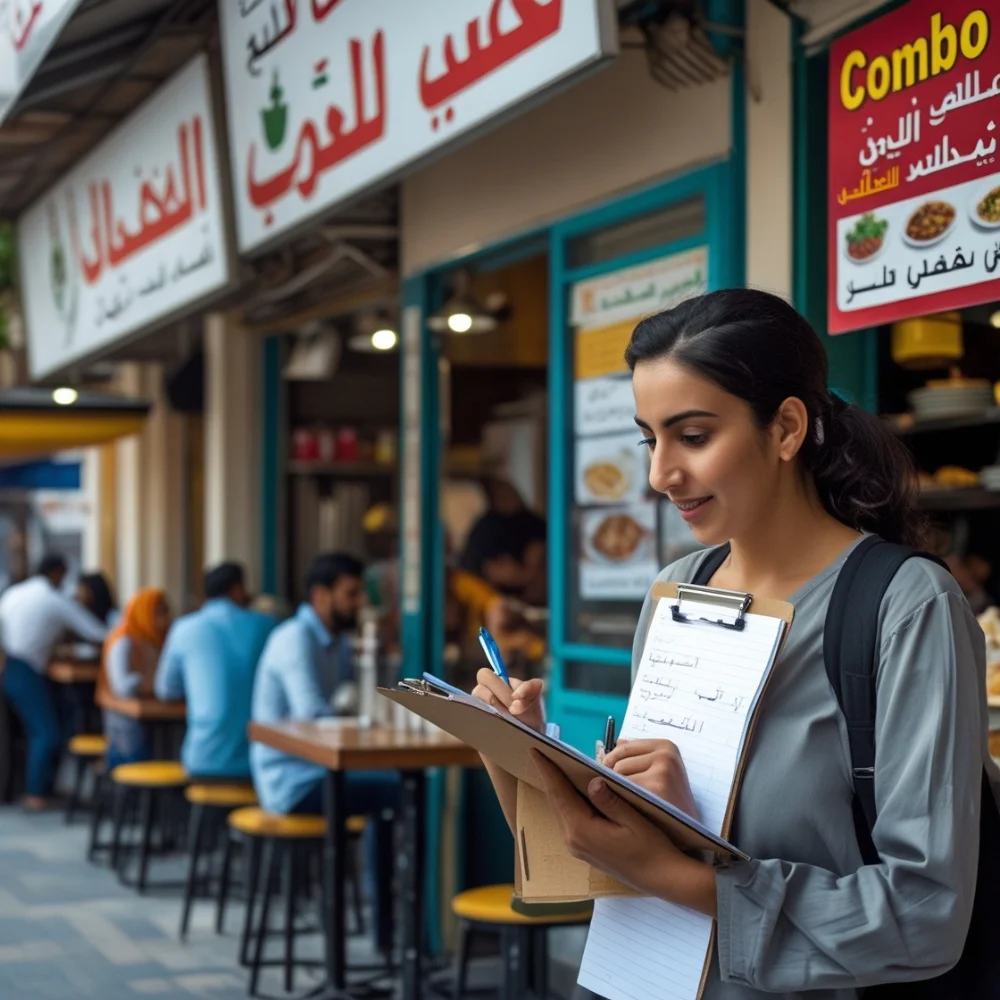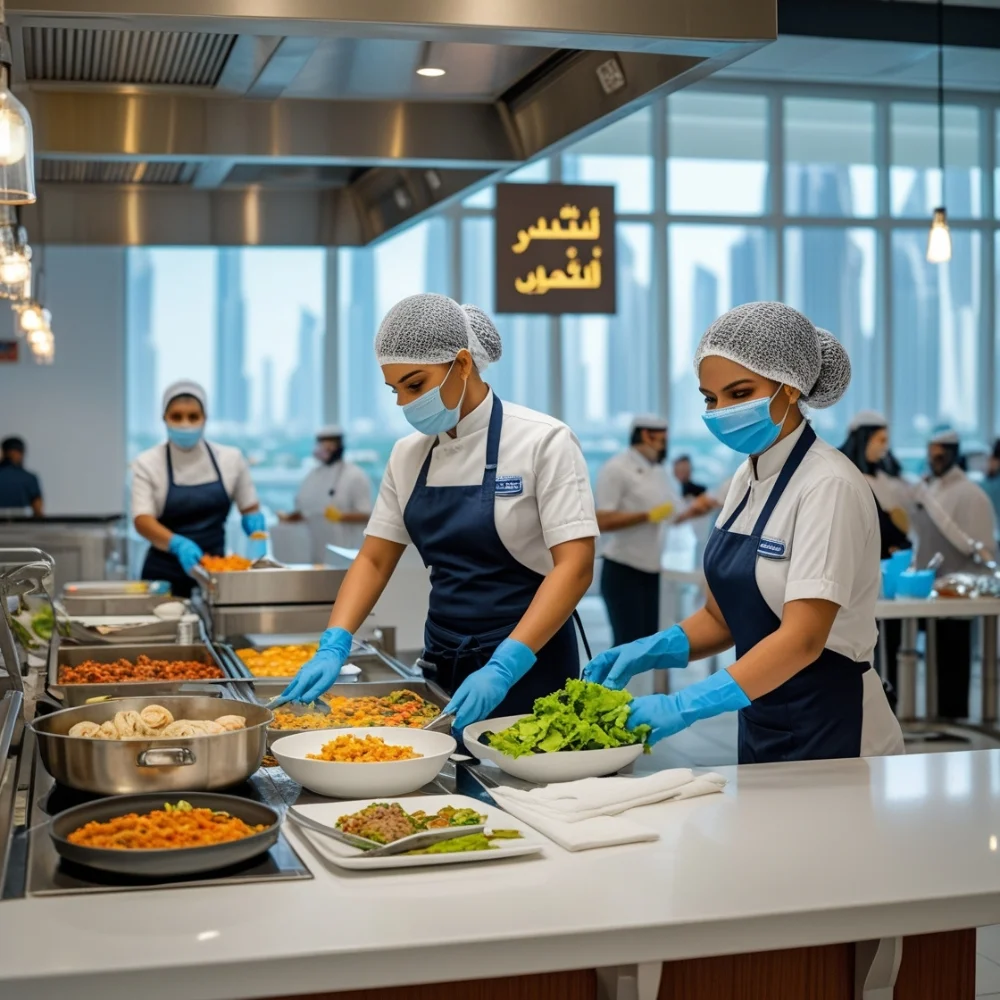
Starting a Dubai cafeteria is a smart move for anyone looking to enter the thriving food and beverage industry in the UAE. With a multicultural population, high tourist footfall, and a strong appetite for casual dining, cafeterias in Dubai enjoy year-round demand. Whether you’re dreaming of serving quick bites or freshly brewed coffee with sandwiches, Dubai offers the right platform for cafeteria entrepreneurs. But turning that dream into a reality takes planning, paperwork, and smart decisions.
Understand the Dubai Cafeteria Market
Before launching your cafeteria, it’s important to understand the market you’re entering. The Dubai cafeteria scene is highly competitive, yet full of opportunity. Cafeterias cater to both fast-paced daily routines and casual hangouts. To stand out, you must align your offering with customer needs and gaps in the market.
1. Know Your Target Customers
To make your cafeteria business work, knowing who you’re serving is crucial. Here are the most common customer segments:
- Office Workers: These customers are usually looking for quick breakfasts, affordable lunches, and takeaway coffees during work breaks. They prefer fast service and consistent quality.
- Tourists and Residents: This group enjoys relaxed meals and local flavors. They might dine in or take out, and are often attracted by good ambiance and variety.
- Delivery-Based Food Seekers: Many Dubai residents order food via delivery apps. Customers pay attention to how food is packaged, how good it tastes, whether it’s worth the price, and how quickly it’s delivered.
2. Study the Competition
Understanding your nearby competitors is an important step before launching your cafeteria. It helps you find out what others are doing well and, more importantly, what they’re missing so you can create a better experience for your customers. Begin by exploring cafeterias located within 2 kilometers of your chosen spot. Pay attention to their food variety, pricing, promotions, cleanliness, customer service, and the overall environment. This will give you a clear picture of how to position your cafeteria with unique offerings that stand out. Whether it’s through better pricing, healthier food options, or a more modern setup, identifying gaps in the local market allows you to serve your customers more smartly and appealingly. Key Areas to Study:

1. Nearby Cafeterias
Visit or research 5 to 10 cafeterias close to your location. Observe their strengths and note what’s missing; this could be menu items, customer service, or even ambiance.
2. Menu Offerings
Check if they serve only snacks, full meals, or just beverages. You can stand out by introducing unique items like healthier options, fusion dishes, or seasonal specialties.
3. Pricing and Promotions
Analyze their pricing structure and any deals they offer. Ask yourself: Can you provide more attractive combo meals, better prices, or loyalty rewards to give customers extra value?
Choose the Right Business Location
Choosing the ideal location is a crucial step in launching your cafeteria in Dubai. A good location doesn’t just bring in more people; it builds a steady flow of loyal customers. Cafeterias work best in busy areas where people pass by regularly. Whether it’s office workers looking for a quick coffee, students grabbing snacks, or shoppers needing a break, your location should be easy to spot and convenient to access. Without enough foot traffic or visibility, even a great menu might go unnoticed.
1. Key Factors for Location Choice
When choosing your cafeteria spot, keep these factors in mind:
1. Foot Traffic
Look for areas with high daily movement, such as near metro stations, commercial buildings, schools, or shopping malls. The more people passing by, the higher the chances they’ll stop in for a coffee, snack, or quick bite.
2. Nearby Offices or Residential Areas
Locations close to office towers bring in employees during breakfast, lunch, and break hours. Residential areas give you access to families and individuals looking for a nearby place to eat, especially in the evenings or on weekends.
3. Rent and Size Suitability
Make sure the rent matches your budget so you can manage costs in the long term. Also, check if the space is practical—there should be enough room for kitchen appliances, seating (if dine-in), and storage. A small, overcrowded place may limit your service quality or comfort for customers.
Create a Profitable Cafeteria Plan
Every successful cafeteria begins with a strong and well-thought-out business plan. This plan acts like a roadmap, guiding you through your startup phase and helping you make smart financial decisions. A clear plan outlines how much money you need, where it will be spent, how the business will operate daily, and how it will grow over time. Without proper planning, unexpected costs and mismanagement can hurt your profitability, even before you open your doors.
1. Set a Realistic Budget
Budgeting is the most critical part of your cafeteria plan. It ensures you don’t overspend and gives you a clear view of your setup and early operating costs. A well-balanced budget prepares you for both expected and unexpected expenses.
Here’s how to divide your budget wisely:
- Equipment and Fit-Out (30–40%)
A significant portion of your budget will go into setting up the kitchen and customer area. This includes essential items like:
- Ovens, grills, fryers, and refrigerators
- Coffee machines, display counters, and serving trays
- Tables, chairs, lighting, and interior décor
2. Staff Wages
Hiring the right team is crucial. Plan for:
- Monthly salaries for 3 to 5 employees (cooks, helpers, cashiers, cleaners)
- Visa costs, health insurance, and accommodation (if required)
- Possible training or staff uniforms
3. Initial Stock and Supplies
- To get started, you’ll need to purchase:
- Food ingredients like rice, oil, spices, dairy, and snacks
- Packaging for takeaway and delivery (boxes, cups, bags)
- Cleaning supplies, staff uniforms, utensils, and kitchen tools
4. Define Your Menu and Prices
Preparing these documents in advance helps ensure a smooth and timely registration process. It should be simple, clear, and suited to the tastes of your target audience. Focus on offering food that is popular, affordable, and easy to prepare. Try to balance variety with efficiency, so you can maintain quality and speed in service.
1. Affordable Snacks and Meals
Offer popular, easy-to-prepare food items like:
- Sandwiches, wraps, and burgers
- Parathas, rolls, biryani, pulao, and rice bowls
2. Fresh Juices and Hot Beverages
Offering a range of beverages can help boost the total value of each customer’s order:
- Fresh juices and milkshakes
- Teas (like karak, green tea) and coffees
3. Competitive Pricing Strategy
Set prices that reflect both quality and portion size, while staying aligned with local market rates.
Attract more customers with smart pricing methods:
- Combo deals (e.g., sandwich + juice at a discounted price)
- Happy hour offers during off-peak times
- Loyalty programs to reward repeat customers
Register Your Cafeteria Business
Before opening your doors to customers, your cafeteria must be legally registered. This ensures you operate under the law, meet food safety standards, and can access utilities, suppliers, and delivery platforms. The process involves selecting the right license type, registering your business name, and obtaining the necessary permits from Dubai authorities.
Steps to Register Your Cafeteria:
1. Choose the Right License Type
Cafeterias in Dubai are classified under commercial food services, and you have two main options for licensing:
1. Mainland License
- Best if you want to operate anywhere in Dubai, whether on busy streets, near schools, offices, or residential areas
- Gives you the freedom to serve walk-in customers and expand without restrictions
2. Free Zone License
Best suited for cafeterias focused on delivery, takeaway, or serving customers located inside the free zone. May come with location restrictions, but offers 100% business ownership, fewer setup costs, and simplified procedures
3. Reserve your trade name
- Submit your business plan and documents
- Obtain necessary clearances from Dubai Municipality and the relevant food safety authorities.
- Finalize Ejari (rental contract) for your cafeteria location
Get the Required Approvals
Before you can officially open your cafeteria in Dubai, you must secure specific approvals from government authorities. These approvals ensure that your business meets the city’s strict food safety and public health standards. Without them, your cafeteria will not be allowed to operate legally.
1. Essential Approvals Include:
Dubai Municipality Food Safety Approval
This is a must-have clearance that confirms your kitchen, food storage, and preparation areas are hygienic and follow all food safety rules. The municipality will inspect your premises to make sure your layout, equipment, and cleanliness meet the required standards.
2. Health and Safety Certifications
These are additional checks that focus on:
- Pest control measures
- Proper ventilation in the kitchen
- Sanitation systems and drainage
Arrange the Required Documents
To legally register and license your cafeteria in Dubai, you must gather and submit specific documents. These are necessary for getting your trade license, passing inspections, and proving your business setup complies with local laws.
1. Key Documents You’ll Need
- Passport copy (of the business owner or partners)
- Emirates ID (if you’re already a UAE resident)
- Business name approval issued by Dubai’s Department of Economic Development (DED).
- Lease agreement (Ejari) signed for your cafeteria location
Kitchen layout plan, clearly showing the cooking, storage, and washing areas. This helps prove your facility meets Dubai Municipality’s food safety requirements. Getting these documents ready ahead of time helps prevent any hold-ups during the registration process.
2. Hire and Train Your Staff
The success of your cafeteria doesn’t depend on just good food it also depends on the people serving it. While you don’t need a large team, hiring the right staff and training them well is crucial to keeping customers happy and running operations smoothly. Key Roles to Fill:

1. Cook or Chef
Responsible for preparing meals, managing food prep, and maintaining consistent taste and quality.
2. Cashier / Waiter
Handles customer orders, billing, and in some cases, table service. They also manage the front-end experience.
3. Cleaning Staff
Keeps the cafeteria clean and hygienic throughout the day. Maintaining a clean environment is essential for both customer satisfaction and ensuring food is safe to consume.
4. Staff Training Essentials
Training ensures that your staff work efficiently and professionally. Focus on:
5. Food Safety and Hygiene
Train them to wear gloves, masks, and hairnets; wash hands regularly; and maintain clean workspaces. It’s not just a recommended practice, it’s also a legal requirement.
6. Customer Service
Teach your team how to greet customers politely, respond to feedback or complaints calmly, and create a friendly, welcoming atmosphere that encourages repeat visits.
Why Start a Dubai Cafeteria?
The cafeteria model is ideal for Dubai due to its affordability, flexibility, and steady demand. Here’s why many entrepreneurs are choosing this business:
- Startup and running expenses are generally more affordable than those of upscale restaurants.
- Quicker return on investment is possible due to steady daily income.
- Opportunity to expand through branches or franchising
- Dubai’s fast-paced lifestyle creates a constant flow of customers throughout the day.
Start Your Cafeteria Business with LUKADAH
At LUKADAH, we specialize in setting up food and beverage businesses in Dubai. Our team handles all legal processes, documentation, and approvals while guiding you on cost-effective strategies for success. Let us help you turn your dream Dubai cafeteria into a reality.
